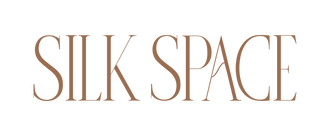Beginners guide to acne
Non-inflamed
- Open comedone (blackheads)
- Closed comedone (whitehead)
Inflamed
- Papule (pimple)
- Pustule
- Nodule
- Cyst

Inflammatory acne is generally a genetically inherited condition. When the blockage of dead skin cells and oil do not become inflamed and is closed to the surface of the skin, it is considered a whitehead.
When the blockage is non-inflamed but is open to the surface of the skin (open comedone) it is considered a blackhead (above). The tip of the open comedone becomes darkened as it is exposed to oxygen in the environment. If there is P. Acnes bacteria present on the surface of the skin, black heads can become infected or inflamed if this bacteria spreads from other infected pores.
As the blockage of dead skin cells and oil continue to build up, pressure inside the pores increases and can rupture. The contents of the pore and P. Acnes leaks into the surrounding tissue causing inflammation, infection and a red bump that is called an Inflammatory papule or commonly known as a pimple.
In an attempt to fight the P. Acnes infection, the immune system sends white blood cells that pile up in the pore creating visible whitehead containing puss.
When a group of pustules cluster together under the surface of the skin, they can form a module or cyst. They are usually characterised as larger, harder and deeper lesions that are painful and take a long time to heal. The main difference between the two is that cysts are puss-filled and have a diameter of 5mm or more. Both typically cause scarring, and can have a tendency to recur.

Women usually have approximately one-tenth the amount of androgens (make sex hormones) that men do. When out of balance with oestrogen (female sex hormone), these androgens can stimulate sebaceous glands, increasing oil activity within the skin and contributing to acne. Approximately 60% of acne-prone women experience premenstrual acne from 7-10 days prior to their periods. This is because oestrogen levels drop two weeks after menstruation and androgens stimulate oil production.
It can be expected to experience hormonal acne during life events such as:
- Puberty
- Pregnancy
- Breast feeding
- Change of contraception
- Menopause
- Extended periods of high stress
Birth control can typically be categorised as oestrogen or progesterone dominant, that can have varying effects of androgen balance within the body. As a general rule of thumb, those that can have the potential to have high androgenic effects should be avoided. Instead consult your GP about contraceptive options that are oestrogen dominant.
Diet triggers to avoid
- Iodine salt and foods containing - an exception is sea salt and non-iodised salts (these are fine)
- Dairy (high in iodine and hormones) - this means milk, cheese, high consumption of milk chocolate. Swap milk for dairy free options such as Almond, Oat or Rice. NO SOY MILK
- No soy products - tofu, soy sauce, edemame. Soy can alter the natural levels of hormones
- Whey derivatives - this includes whey protein and similar supplements. Whey protein is known for increasing inflammatory markers within the body.
- Biotin - is commonly used within hair, skin and nails supplements
- Avoid oils high in protein - canola oil, organ meats including pate, peanuts and peanut butter. Swap for coconut oil, olive oil and almond butter.
- Reduce seafood- swap for lake fish
- No seaweed
Treating acne
It can take up to three months for an acne lesion to form, starting as a microcomedone before progressing into blackheads and pimples. This means the pimple on your face today, began up to three months ago! Unfortunately the process of clearing acne lesions can take just as long for this very reason.
It is recommended to speak with your skin specialist and GP to ensure the best treatment for you.


Leave a comment